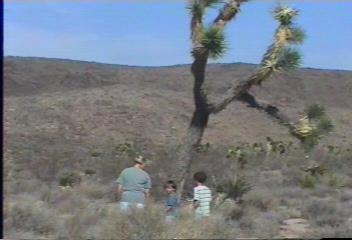
Here the Joshua Tree of the high
desert and the Yucca cactus of the lower desert grow together
 |
This is a Joshua Tree.
Two deserts come together in Joshua Tree National Park, the lower, drier
Mojave and higher altitude Colorado.
Here the Joshua Tree of the high
desert and the Yucca cactus of the lower desert grow together
|
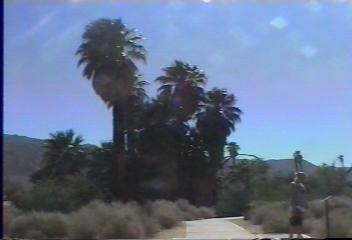 |
We also saw a story book style oasis in the desert. Here the San Andreas fault pushes water up to the surface. |
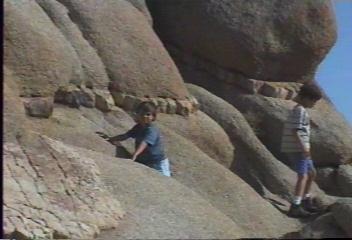 |
The was also many different
rock formations here. These rocks are made of small crumbly crystals.
They are rounded and easily eroded by the wind and rain.
Between the large rocks is a
layer of harder material that can be seen by Max's head. This layer was
once molten lava that was squeezed between cracks in the rocks. We
saw huge rocks laying on the desert floor that had slid off this harder
material.
|
| This is an Ocotillo cactus.
They grow about ten feet tall. In the spring they have red blossoms.
We are in an area with hundreds of these.
There were spots that had just the right conditions for a particular species of plant. This one for the Ocotillo, another for Choila Teddy Bear cactus and one for Joshua trees. |
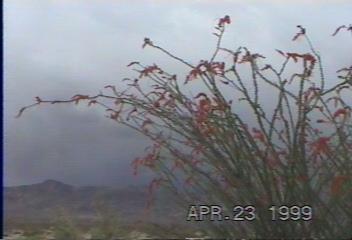 |
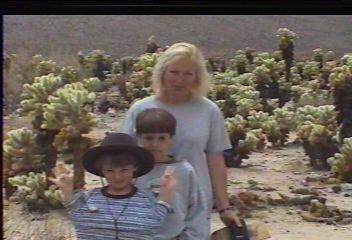 |
This is Choila Teddy Bear
cactus. There was a small dirt trail that winded through thousands
of this type.
We saw some that had died and
discovered that the dried trunks look similar to the rain sticks we see
in stores.
|
| This is the blossoms on the
Choila Teddy Bear cactus. The blossom at the bottom of the picture
is fully opened.
Parts off this cactus fall to the ground and eventually sprout roots and turn into another cactus. |
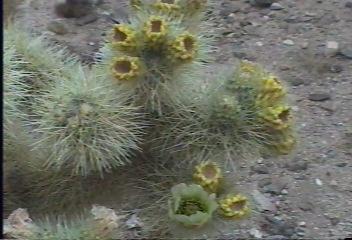 |
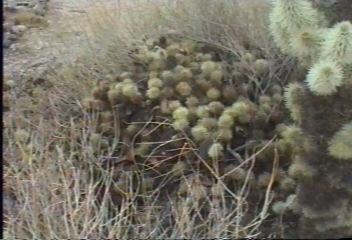 |
Notice the bush that is covered by the pieces of Teddy Bear cactus that have fallen. This is the home of the desert Wood Rat. These critters will collect hundreds of these balls and pack them into the small bush to make a nest. Other animals won't to go into this rat's house. This protects them from everything except the snakes. |
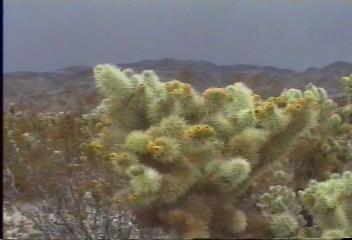 |
We learned that each
barb of this cactus has little microscopic spines. If you bump into
this fellow you can pull out the large spines but the little ones will
irritate your skin for days.
No, we learned this the easy way, by reading the park information. |
| Another nice oasis in the desert.
This one is called Palm Springs.
Palm Springs is tucked behind the San Jacinto Mountains. A narrow gap between mountain ranges, just north of Palm Springs is a main corridor for the cooler coastal air. This cooler air often rushes in at thirty to fifty mile per hour. |
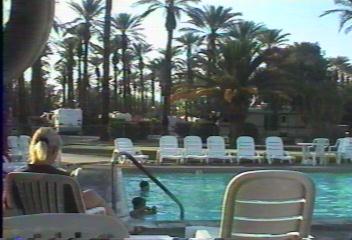 |
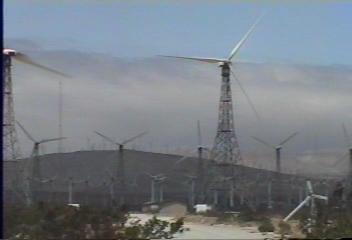 |
These winds blow 364 days a year making it an ideal place for wind farms, a clean energy source that supplies the entire Palm Springs area with electricity. There are over four thousand wind mills here. One night driving back from Joshua Tree National Park, Ed told the kids to stick their heads out the truck window. Max thought this was to experience the tremendous 50 MPH winds. |
| The nacelle, cover, is off of
this wind powered generator. Click here to go to a webpage with a
lot of good technical information about this technology and it's future.
Some of the largest generators here are the size of a railroad boxcar.
|
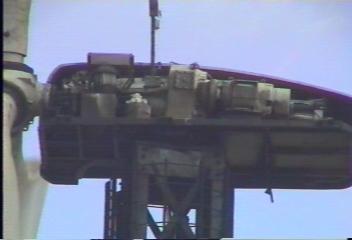 |
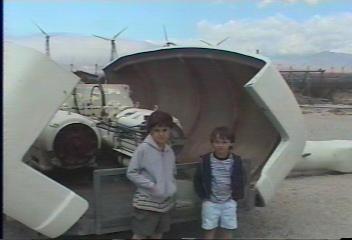 |
Here is a smaller generator
with the nacelle opened up. To perform maintenance or repair the
generator or gearbox, a repair man climbs the tower, crawls through an
access hole and opens the nacelle.
Quite often they have to work in very windy conditions. |
| Max is checking to see how heavy
this blade is. Since it wouldn't move, all we know is that it's real
heavy.
This one is 70 feet long. The longer ones in this area are 110 feet. They are made mostly of fiberglass. |
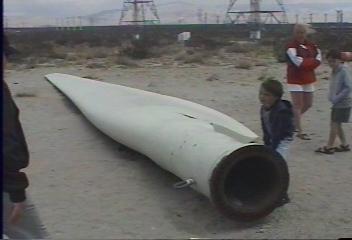 |
|
|
|
|
Next Adventure (Southern California) |